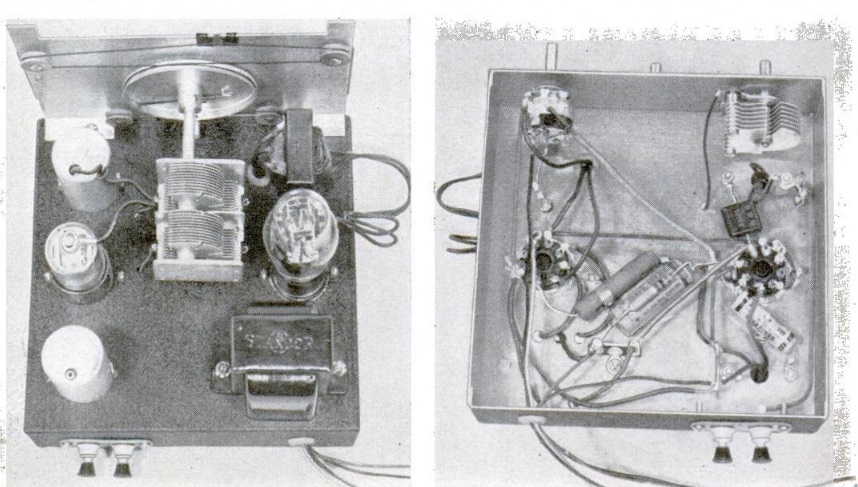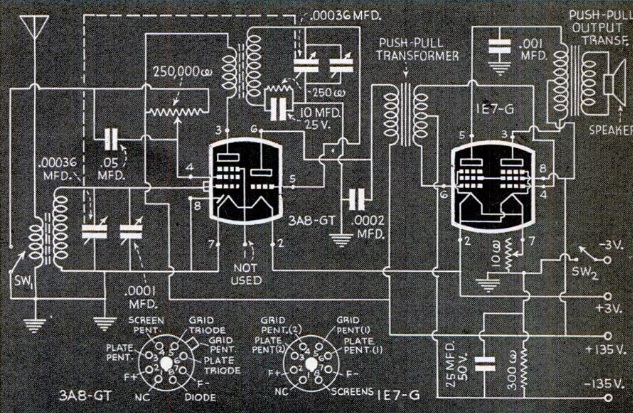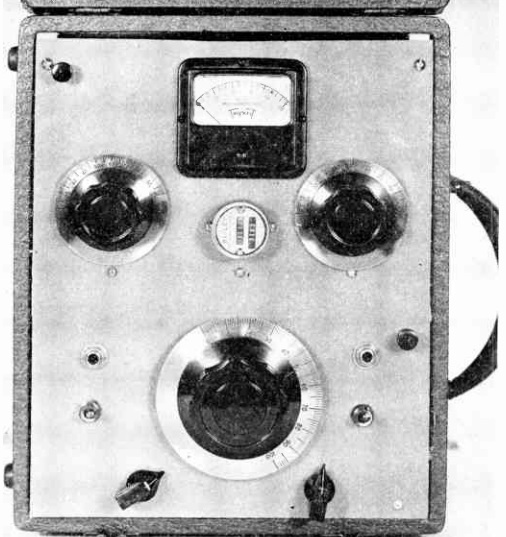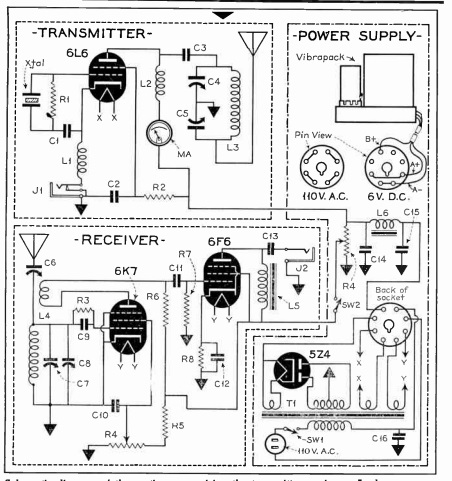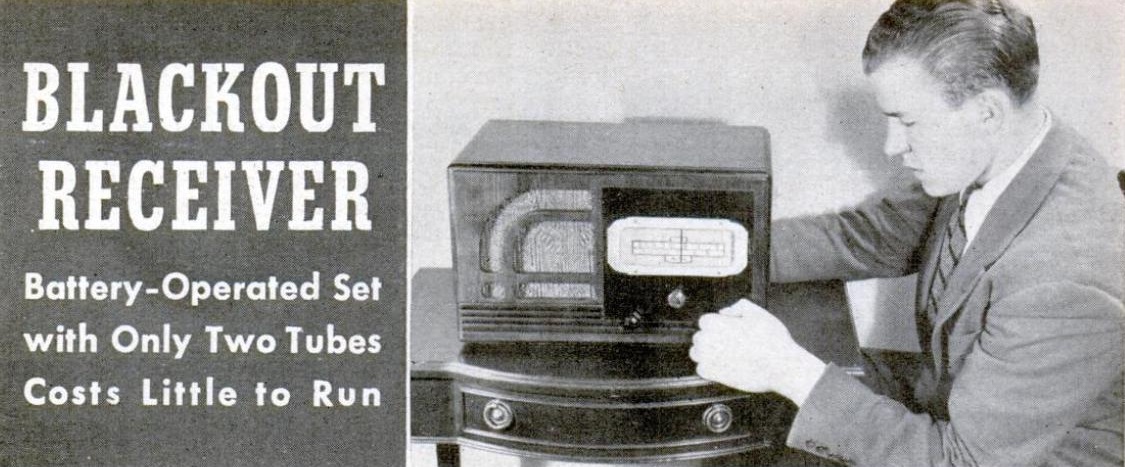 Eighty years ago this month, the September 1942 issue of Popular Science showed how to construct this two-tube battery operated receiver. The low power consumption made the set especially useful in case of a blackout, an ever-present wartime possibility.
Eighty years ago this month, the September 1942 issue of Popular Science showed how to construct this two-tube battery operated receiver. The low power consumption made the set especially useful in case of a blackout, an ever-present wartime possibility.
The set consisted of a 3A8-GT triode-pentode which served as RF amplifier and detector. This went to a 1E7-G dual pentode, which served as the push-pull audio amplifier, driving a loudspeaker. For best volume, 135 volts was recommended (three 45-volt batteries), but excellent results could be obtained with just 90 volts. Because sets of this type sometimes had difficulty tuning the entire broadcast band, there is a trimmer in parallel with the tuning capacitor. This was adjusted to the particular part of the band to be tuned, and then stations were tuned in with the main dial.
Eighty years ago, people took things in stride, and most people considered electricity to be a luxury. If the power went out, whether because of a storm, or to blackout in case of air attack, people were able to continue their life with little interruption. And for those who put together this radio, they still had the luxury of radio, even with the power out.
These days, people view electricity more as a necessity and not a luxury. Ironically, though, it’s much easier to prepare for blackouts today. Things like batteries, flashlights, and portable radios are incredibly cheap. For some pointers on how to prepare for blackouts, see our earlier post. And for pointers on how to prepare for winter power outages (which might be a true emergency), see this post.
